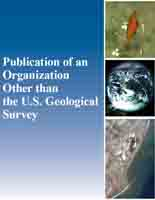Aquifer reclamation design: The use of contaminant transport simulation combined with nonlinear programing
Links
- More information: Publisher Index Page (via DOI)
- Download citation as: RIS | Dublin Core
Abstract
A simulation-management methodology is demonstrated for the rehabilitation of aquifers that have been subjected to chemical contamination. Finite element groundwater flow and contaminant transport simulation are combined with nonlinear optimization. The model is capable of determining well locations plus pumping and injection rates for groundwater quality control. Examples demonstrate linear or nonlinear objective functions subject to linear and nonlinear simulation and water management constraints. Restrictions can be placed on hydraulic heads, stresses, and gradients, in addition to contaminant concentrations and fluxes. These restrictions can be distributed over space and time. Three design strategies are demonstrated for an aquifer that is polluted by a constant contaminant source: they are pumping for contaminant removal, water injection for in-ground dilution, and a pumping, treatment, and injection cycle. A transient model designs either contaminant plume interception or in-ground dilution so that water quality standards are met. The method is not limited to these cases. It is generally applicable to the optimization of many types of distributed parameter systems.
| Publication type | Article |
|---|---|
| Publication Subtype | Journal Article |
| Title | Aquifer reclamation design: The use of contaminant transport simulation combined with nonlinear programing |
| Series title | Water Resources Research |
| DOI | 10.1029/WR020i004p00415 |
| Volume | 20 |
| Issue | 4 |
| Publication Date | July 09, 2010 |
| Year Published | 1984 |
| Language | English |
| Publisher | American Geophysical Union |
| Contributing office(s) | Toxic Substances Hydrology Program |
| Description | 13 p. |
| First page | 415 |
| Last page | 427 |


